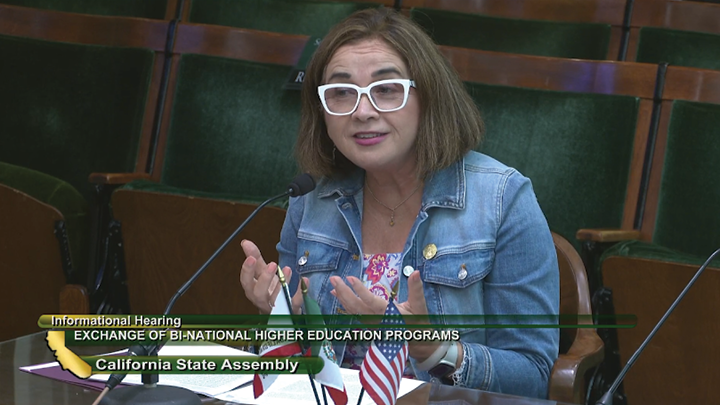SDSU President Advocates for Binational Initiatives in State Assembly Testimony
San Diego State University’s Oaxaca Center for Mesoamerican Studies is a vital symbol of cultural and educational possibilities in the transborder region, SDSU president Adela de la Torre said last week in testimony to the California Assembly.
From professional development for faculty and staff to student research in study abroad programs, the center, located in Oaxaca, Mexico, has become “a hub of transformative experiences” for faculty and students alike in just two years, de la Torre said in remarks to the Select Committee on California-Mexico Bi-National Affairs.
“Our interconnectedness as a binational region is symbolic of the beautiful tapestry of communities we see in California,” de la Torre said, “and it will only continue to grow.”
Chaired by Assemblymember Eduardo Garcia (D-Coachella), the select committee conducted a hearing on June 5 on shared educational and economic opportunities for California and Mexico. California has the country’s largest population of indigenous Mesoamerican communities and more than 350,000 Oaxacans live in the state.
De la Torre said the Mesoamerican studies center, opened in 2022, is one of the ways SDSU is embracing its proximity to the Mexican border both in San Diego and in Imperial County, where SDSU Imperial Valley lies within walking distance of a border crossing.
“Our faculty have conducted at least 11 intensive research projects with over 30 undergraduate, graduate and doctoral students,” de la Torre said, frequently in partnership with Mexican institutions. One three-year project focused on food insecurity, climate change and migration.
The University Library is engaged in multiple joint projects in Oaxaca, she said, focused on the digitization, description and provision of access to library materials. It is also working on developing an online collection of 20th century Indigenous language resources, she said, for use in research and teaching.
De la Torre said the center’s 13 study abroad programs and internships include nine focused on Indigenous communities, cultures and languages.
Earlier this year, 12 Associated Students leaders including four from SDSU Imperial Valley participated in an immersion program focused on lives of Indigenous communities of the Aztec Empire from precontact to contemporary times. Students learned from farmers, domestic cooks, artisans and small business owners.
The center is a focal point for SDSU efforts to preserve and teach Nahuatl and other languages of Mexico’s Indigenous communities.
“I’ve been contacted by other university presidents (and) researchers because of this deep interest in having a site where you can focus on the areas of Indigenous languages and culture,” de la Torre told the committee. “It’s very unique and it’s very, very important in terms of this preservation.”
Programs at the center scheduled for 2025 include a meeting of the Council of Museum Anthropologists and a four- to six-week summer program on Health Communication for Indigenous and Afro descendent communities of Oaxaca.

